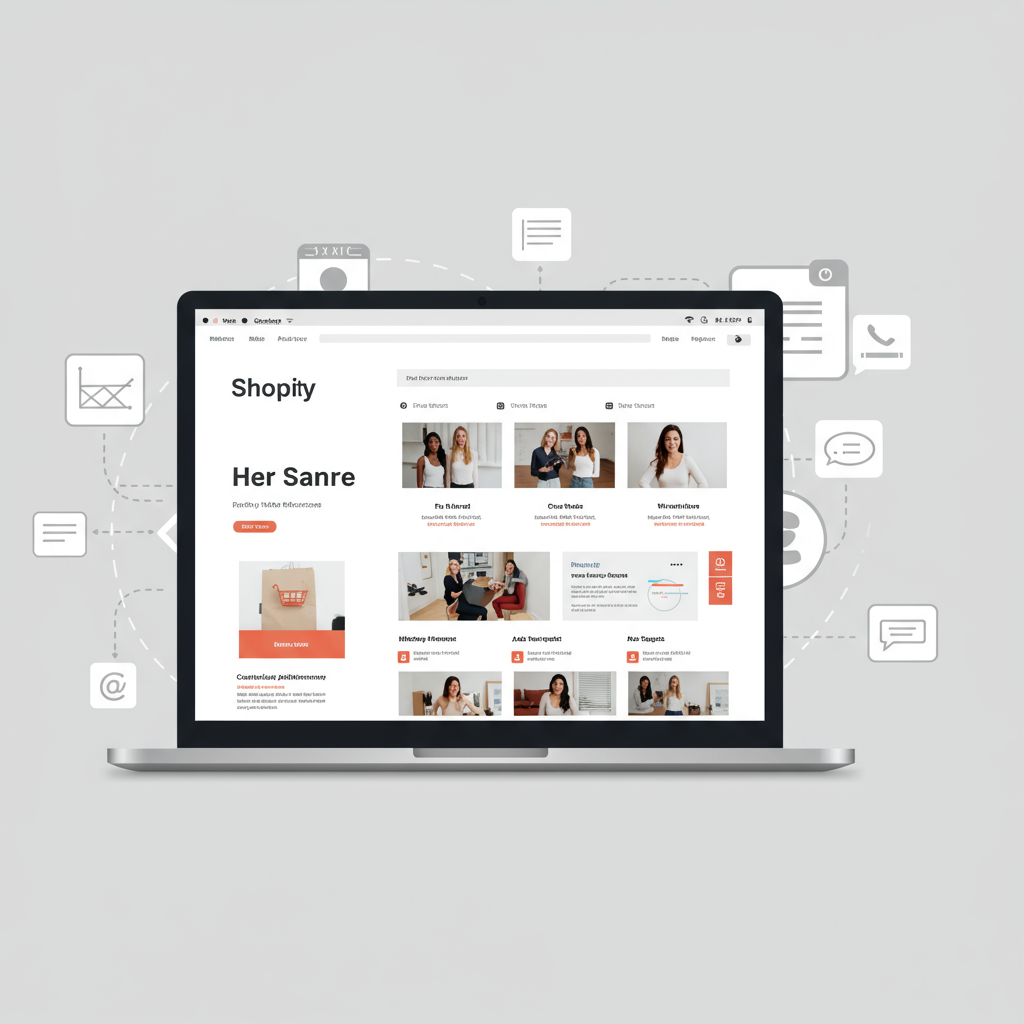Unlock the secrets to a captivating and effective online storefront that drives sales and builds lasting customer relationships.
As a Shopify merchant, you know your online store’s homepage is more than just a digital storefront; it’s your brand’s first impression, your virtual handshake with potential customers.
In the rapidly evolving e-commerce landscape, staying ahead means constantly refining your approach, especially as we look towards 2025.
The design choices you make today for your Shopify homepage will significantly impact your conversion rates, customer engagement, and ultimately, your bottom line tomorrow.
I’ve spent countless hours analyzing trends and best practices, and I’m excited to share my insights on how to craft a compelling, high-converting homepage for the year 2025.
My goal is to equip you with actionable strategies that will not only make your store look fantastic but also perform exceptionally well.
One of the biggest shifts we’re seeing is the move towards hyper-personalization, driven by artificial intelligence. AI-driven recommendations, dynamic content blocks, and tailored user journeys will be standard.
Your homepage should leverage AI to display products, offers, and content that are most relevant to each individual visitor, based on their browsing history, demographics, and even real-time behavior.
Static images are becoming less impactful. Customers crave richer, more interactive experiences, which means immersive elements are key.
Consider integrating 3D product views, augmented reality (AR) try-ons, or high-quality video demonstrations directly on your homepage to showcase your products in a dynamic way.
Consumers are increasingly conscious of a brand’s values. Your homepage is the perfect place to subtly highlight your commitment to sustainability, ethical practices, or social responsibility.
This could be through dedicated sections, trust badges, or even a simple, powerful statement in your hero section, resonating with your target audience.
This isn’t new, but its importance continues to grow: mobile-first design. A significant portion of your traffic will come from mobile devices.
Your homepage *must* be flawlessly responsive, loading quickly and offering an intuitive experience on any screen size. Prioritize touch-friendly elements and concise content.
Patience is a virtue few online shoppers possess. A slow-loading homepage is a conversion killer, plain and simple.
Optimize images, minimize code, and leverage Shopify’s built-in speed optimizations. Every millisecond counts in retaining visitor attention and preventing bounce rates.
The hero section is your prime real estate. It needs a compelling headline, a high-quality image or video, and a clear call-to-action (CTA) that immediately communicates your value proposition.
Make it visually striking and instantly convey what your brand is about and what problem you solve for your customers.
An intuitive menu is non-negotiable. Visitors should be able to find what they’re looking for within seconds. Organize your categories logically, use clear labels, and consider a sticky header for easy access as users scroll.
Showcase your bestsellers, new arrivals, or seasonal collections prominently. Use high-quality product photography and concise descriptions, making it easy for customers to click through to product pages directly from the homepage.
Build trust by displaying customer reviews, testimonials, media mentions, or user-generated content. People trust other people, so leverage this psychological trigger to instill confidence in your brand.
Every section of your homepage should guide the user towards a desired action. Don’t leave them guessing what to do next.
Use strong, action-oriented language for your buttons (e.g., ‘Shop Now,’ ‘Discover More,’ ‘Get Your Free Guide’) to maximize click-through rates.
If you have a blog, feature your latest articles or guides. This positions you as an authority, drives organic traffic, and keeps visitors engaged longer. It’s a fantastic way to provide value beyond just selling products.
Make it easy for customers to contact you. Include links to your FAQ, contact page, and return policy. Display trust badges (e.g., secure payment, money-back guarantee) to alleviate any concerns.
Your homepage needs to be discoverable. Ensure your title tags, meta descriptions, and image alt text are optimized with relevant keywords. While the homepage isn’t typically a long-form content page, its technical SEO foundation is crucial for overall site ranking.
Design for everyone. Ensure your site is navigable for users with disabilities, adhering to WCAG guidelines. This includes proper color contrast, keyboard navigation, and descriptive alt text for images. It’s not just good practice; it’s essential for a broad audience.
Don’t guess; test. Continuously A/B test different elements of your homepage – headlines, images, CTAs, layouts – to see what resonates best with your audience. Data-driven decisions are always the most effective.
The e-commerce world is dynamic. Your homepage design shouldn’t be a static entity. Plan for regular updates, seasonal changes, and the integration of new technologies as they emerge.
Think of your homepage as a living, breathing entity that evolves with your brand and your customers. It’s about creating a flexible foundation that can adapt to future trends without requiring a complete overhaul every year.
By focusing on these key areas – personalization, immersive experiences, mobile-first design, speed, and essential elements – you’ll be well on your way to creating a Shopify homepage that not only looks stunning but also drives significant conversions in 2025 and beyond.
Remember, your homepage is your digital front door. Make it welcoming, informative, and irresistible.
I’ve shared my best tips for optimizing your Shopify homepage for the coming year. Now, I’m curious: What do you think about this article? What are your biggest challenges or successes with your current homepage design?






